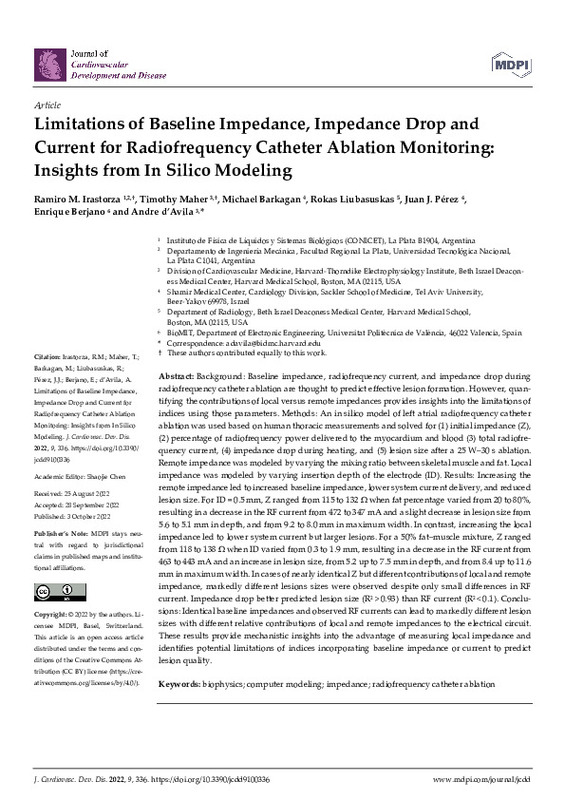JavaScript is disabled for your browser. Some features of this site may not work without it.
Buscar en RiuNet
Listar
Mi cuenta
Estadísticas
Ayuda RiuNet
Admin. UPV
Limitations of Baseline Impedance, Impedance Drop and Current for Radiofrequency Catheter Ablation Monitoring: Insights from In Silico Modeling
Mostrar el registro completo del ítem
Irastorza, RM.; Maher, T.; Barkagan, M.; Liubasuskas, R.; Pérez, JJ.; Berjano, E.; D Avila, A. (2022). Limitations of Baseline Impedance, Impedance Drop and Current for Radiofrequency Catheter Ablation Monitoring: Insights from In Silico Modeling. Journal of Cardiovascular Development and Disease. 9(10):1-12. https://doi.org/10.3390/jcdd9100336
Por favor, use este identificador para citar o enlazar este ítem: http://hdl.handle.net/10251/188559
Ficheros en el ítem
Metadatos del ítem
| Título: | Limitations of Baseline Impedance, Impedance Drop and Current for Radiofrequency Catheter Ablation Monitoring: Insights from In Silico Modeling | |
| Autor: | Irastorza, Ramiro M. Maher, Timothy Barkagan, Michael Liubasuskas, Rokas D Avila, Andre | |
| Entidad UPV: |
|
|
| Fecha difusión: |
|
|
| Resumen: |
[EN] Background: Baseline impedance, radiofrequency current, and impedance drop during radiofrequency catheter ablation are thought to predict effective lesion formation. However, quantifying the contributions of local ...[+]
|
|
| Palabras clave: |
|
|
| Derechos de uso: | Reconocimiento (by) | |
| Fuente: |
|
|
| DOI: |
|
|
| Editorial: |
|
|
| Versión del editor: | https://doi.org/10.3390/jcdd9100336 | |
| Coste APC: |
|
|
| Código del Proyecto: |
|
|
| Agradecimientos: |
Spanish Ministerio de Ciencia, Innovación y Universidades / Agencia Estatal de Investigación (MCIN/AEI/10.13039/501100011033) under grant RTI2018-094357-B-C21, and Agencia
Nacional de Promoción Científica y Tecnológica de ...[+]
|
|
| Tipo: |
|









